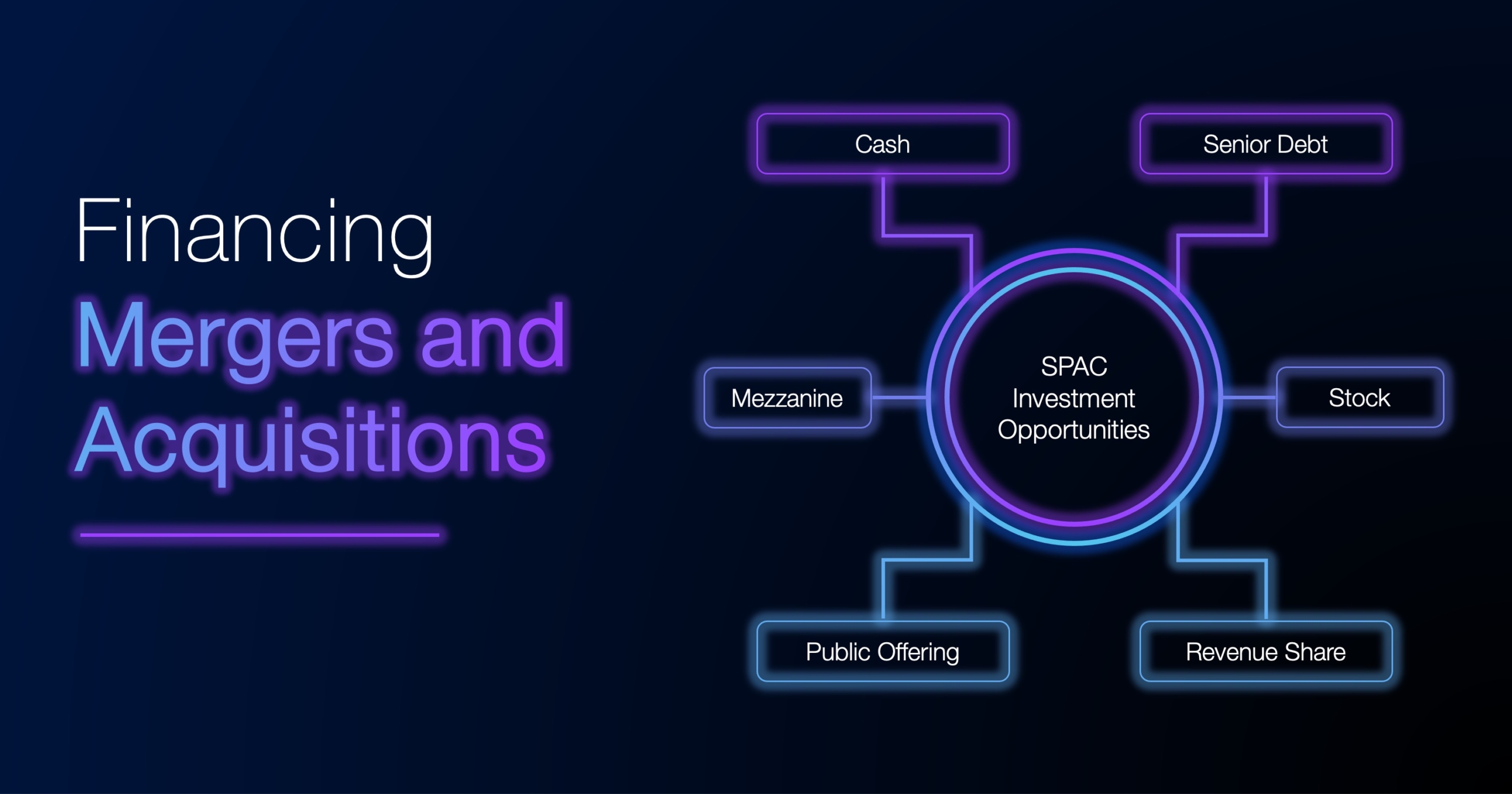How To Finance Your M&A
Finding the right financing structure for an acquisition can sometimes be the most difficult part of the process. When structured correctly, a transaction will provide right amount of liquidity to the acquiree, without hindering the acquiror’s potential for future success and growth.
When contemplating mergers or acquisitions, whether buy-side or sell-side, it is important to select an advisor which understands proper transaction structure and execution, is highly experienced, and can assist in accessing financial and other partners necessary for a successful transaction. ClearThink and its principals have extensive knowledge and experience as well as relationships with a vast network of potential partners.
Often, the structure of a merger or acquisition is driven by the acquiree’s need for liquidity at closing. While M&A transactions typically involve a combination of financing methods, these are the 6 most common types of M&A finance.
How to Finance Your Company’s Mergers and Acquisitions

Cash
Provided that an acquiror has the cash readily available, payment for an acquisition in cash is certainly the cleanest and least complicated alternative from the standpoint of both an acquiror and an acquiree. In the case of cash acquisitions, acquirors usually require a “holdback” in which a certain amount of the cash purchase price is withheld until such time as the acquiror can be certain that representations and warranties are true and correct or covenants of the acquiree are satisfied.
Senior Debt
Debt financing allows an acquiror to purchase a company without diluting the equity in their company. If the acquiror and acquire on a pro forma basis, the acquiror, or the acquiree has positive cash flow, or will have positive cash flow within a short period of time, debt can be a great financing option. Debt financing for acquisitions is usually structured as a term loan, where the acquiror will be required to begin repayment of the lender after a set period of time. For our smaller and more rapidly growing clients, we recommend alternative lenders over traditional banks. Alternative lenders are more flexible with regard to transaction structure, and far less covenant heavy than traditional banks. Learn more about alternative lenders: Commercial Credit: What Alternative Lenders Are Offering
Mezzanine
Mezzanine financing is similar to debt financing. The biggest difference between the two is that Mezzanine finance is subordinated debt. As a result, Mezzanine interest rates are generally significantly higher than senior debt financing rates. In addition, may mezzanine lenders require an equity component to increase their return. Mezzanine finance is ideal for companies that are acquiring a cash flowing business, but are not able to give a lender Senior position.
Stock
An exchange of shares is fairly straightforward. The acquiror gives the acquiree a certain number of shares in the acquiror’s company as payment for the acquisition.
The acquiree should be careful when receiving payment in shares for two reasons. First, depending on how the transaction is structured, payment in shares can result in what is known as phantom tax, which is tax liability without the receipt of cash compensation. Second, unless the acquiror company is publicly traded, it will be very difficult for the acquiree to liquidate their shares. As a result, the acquiree may be stuck with a large tax liability, and no way to liquidate their shares.
Stock payment is also used to incentivize employees or management of the acquiree to continue to work at the acquiror company. Typically, an employee will receive stock options at certain milestones after the acquisition. These milestones are structured in a number of different ways, including periods of time or sales targets.
Public Offering
A public offering is similar to an exchange of shares in the sense that payment is received in the form of stock. The difference, however, is that a public offering provides liquidity to both companies. Once the acquiror has acquired the acquiree and commences trading, the holders of both companies have the ability to sell shares in the public market.
Typically, there will be a period of time anywhere from six months to two years during which the acquiree must hold their shares. This period of time can vary based on a number of factors. These factors include the number of shares, the amount of cash, if any, paid up front, as well the other types of payment involved. Generally, the larger the percentage of the transaction paid in stock, the shorter the amount of time the acquiree will have to hold the shares.
Revenue share and earnout structures are rarely the sole compensation for the purchase of a company. Usually, a revenue share or earnout is part of a larger compensation package, such as shares or cash at the time of closing. Revenue share and earnout structures are used in situations where the acquiror wants to ensure that represented financial milestones will be satisfied over a significant period of time post-closing.
The ClearThink Capital team members are experts at the design and execution of creative acquisition, financial, and other corporate transaction structures. We work with companies to determine the best transaction structure to fit their needs, help prepare the company and its materials for acquisition or financial partners, match them with the most appropriate partners, and work as their advisor throughout the entire process.
Is M&A in your company’s future? Let’s set up a call to discuss how we can help. Get in touch with our team below.









